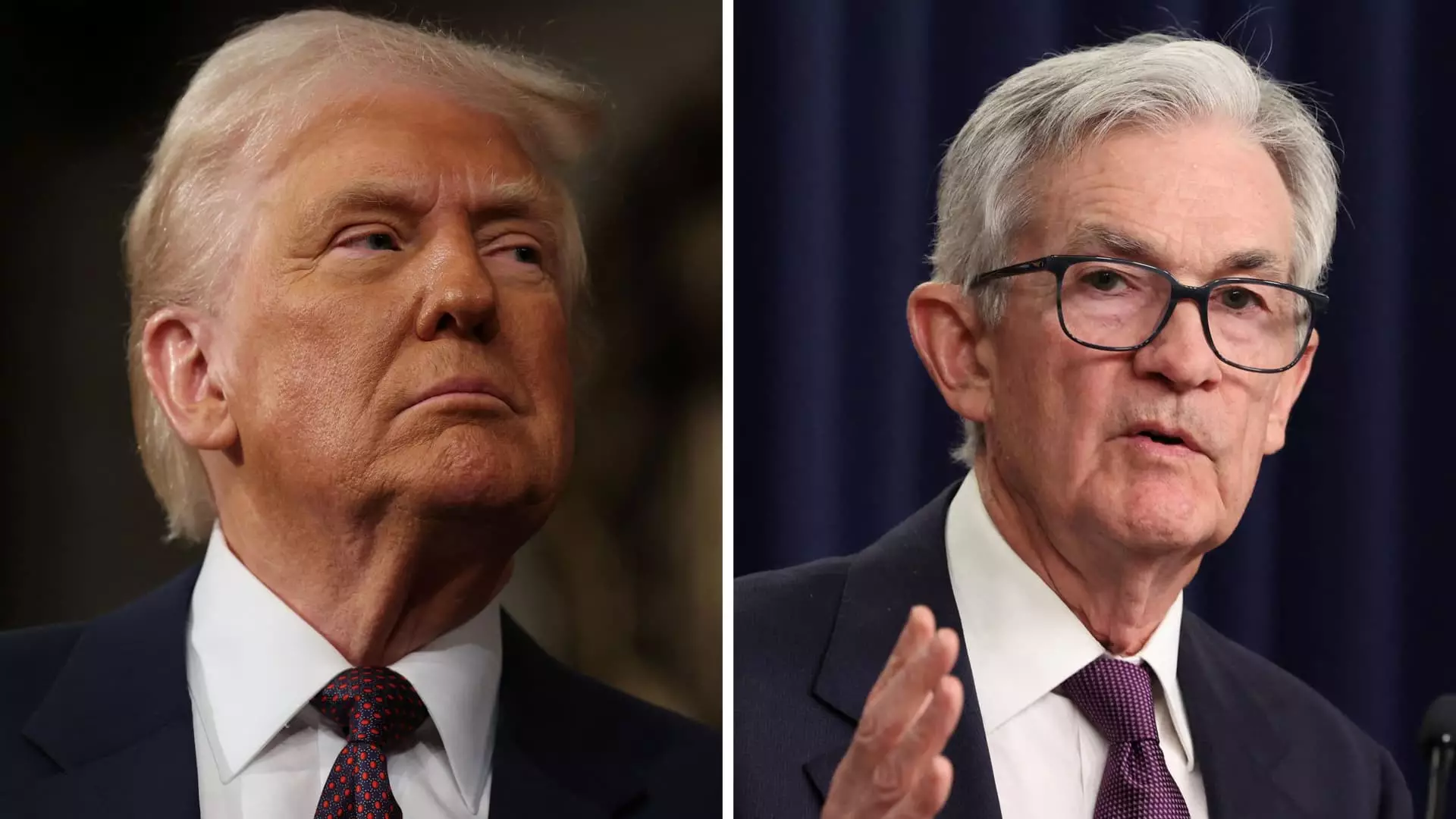The recent flurry of headlines surrounding President Donald Trump’s stance on Federal Reserve Chair Jerome Powell illustrates the fragile intersection of politics and economic policy. While Trump publicly denied plans to oust Powell, reports suggest a strategic calculation within his administration aimed at exerting pressure on the central bank’s independence. This covert tug-of-war hints at a deeper desire to influence monetary policy, especially amid ongoing debates about interest rates and economic growth.
Investors should interpret such developments as signals of potential instability in the institutional framework that underpins financial markets. Central banks, especially the Fed, have traditionally operated free from direct political interference to maintain credibility and control inflation. An overt effort by the executive branch to remove or influence the Fed chair undermines confidence, potentially leading to increased volatility. The market’s temporary dip following the reports demonstrates how sensitive investor sentiment is to political signals, yet the subsequent recovery underscores a shared recognition that escalation might be avoided, at least for now.
Nevertheless, the underlying tension reveals a fundamental shift in how presidential power approaches economic independence. The attempts to pressure or even replace a Fed leader signal a possible erosion of institutional norms, which could invite longer-term instability if perceived as a precedent. For investors, understanding this dynamic is critical, as it suggests future policy moves could become more unpredictable, especially if political goals override economic prudence.
Legislative Battles and the Future of Cryptocurrency Regulation
A clear example of the unpredictable legislative environment is the recent prolonged debate over cryptocurrency regulation bills in the House. The marathon voting session exemplifies the deep divisions within Congress over crypto’s role in the economy. While bills eventually cleared the debate stage, the process highlighted significant partisan and intra-party disagreements that threaten the legislation’s final passage.
For investors in digital assets, such legislative hurdles introduce a layer of risk. Regulatory clarity is crucial for mainstream adoption, and the uncertainty surrounding these bills could either serve as a barrier or an opportunity. The intense debate and the record-breaking vote duration demonstrate how politically charged the crypto space has become, with some factions wary of the disruptive potential of digital currencies and others eager to capitalize on innovation.
The outcome of these legislative efforts will not only shape the legal landscape but also influence investor confidence. A clear regulatory framework could act as a catalyst for broader institutional involvement, thus bolstering digital asset markets. Conversely, delays or adverse legislation could stall growth and lead to increased volatility, especially if lawmakers signal uncertainty or opposition. These developments underscore the importance of regulatory agility and the risk that legislative gridlock could impose on the crypto sector’s future trajectory.
Corporate Earnings: The Resilience and Challenges of Major Players
Turning to the corporate world, recent earnings reports reveal a landscape of resilience amid economic headwinds. PepsiCo’s robust second-quarter performance exemplifies this mix — despite softer global demand, the company’s domestic market shows signs of improvement. The company’s ability to meet growth forecasts amidst challenging conditions highlights a key strength: diversified product lines and geographical reach can buffer against macroeconomic shocks.
However, the story isn’t uniformly optimistic. United Airlines faces a more complex picture. While beating on EPS and maintaining a full-year outlook, the airline’s revenue shortfalls and operational hiccups reveal vulnerabilities. The grounding at Newark and air traffic control shortages illustrate how external factors—government policies, infrastructure issues, and operational disruptions—can impair even well-established companies.
Investors should note that these mixed signals from blue-chip earnings caution against complacency. Growth trajectories remain uneven, and operational risks continue to threaten profit margins. The key takeaway is that resilience is not solely measured by beating estimates but also by how companies adapt to ongoing systemic challenges. Deploying strategic reforms and diversifying revenue streams will determine whether corporations can sustain momentum in a volatile environment.
Regulatory and Geopolitical Tensions: The Case of Tesla
The ongoing struggle between corporate strategy and regulatory oversight is vividly illustrated in Tesla’s predicament in New York. The state’s pushback against Musk’s proposed bylaw change—requiring a 3% ownership stake to initiate shareholder lawsuits—raises fundamental questions about shareholder rights and corporate governance.
Tesla’s move to shift its incorporation from Delaware to Texas, combined with New York’s opposition, highlights the broader contest between corporate executives and regulators over control and accountability. While Tesla’s leadership might aim for streamlined governance and lower compliance costs, critics argue that such changes could limit minority shareholder protections and transparency.
For investors, these regulatory skirmishes are more than bureaucratic disagreements; they serve as harbingers for the evolving landscape of corporate accountability. The outcome could influence investor confidence, especially among institutional players wary of governance erosion. It also indicates that regulatory environments will increasingly shape company strategies, with implications for stock valuation and long-term stability.
In essence, the Tesla debate exemplifies how corporate maneuvering is now intertwined with legal and political battles that could redefine the boundaries of shareholder rights and corporate responsibility. Investors should remain alert to these shifts, as they could presage broader changes across multiple sectors driven by regulatory and political pressures.
—
This analysis underscores the intricate dance between politics, regulation, corporate strategy, and market sentiment. In an era marked by rapid change and heightened scrutiny, the most successful investors will be those who critically evaluate institutional signals and navigate unpredictability with strategic foresight.

